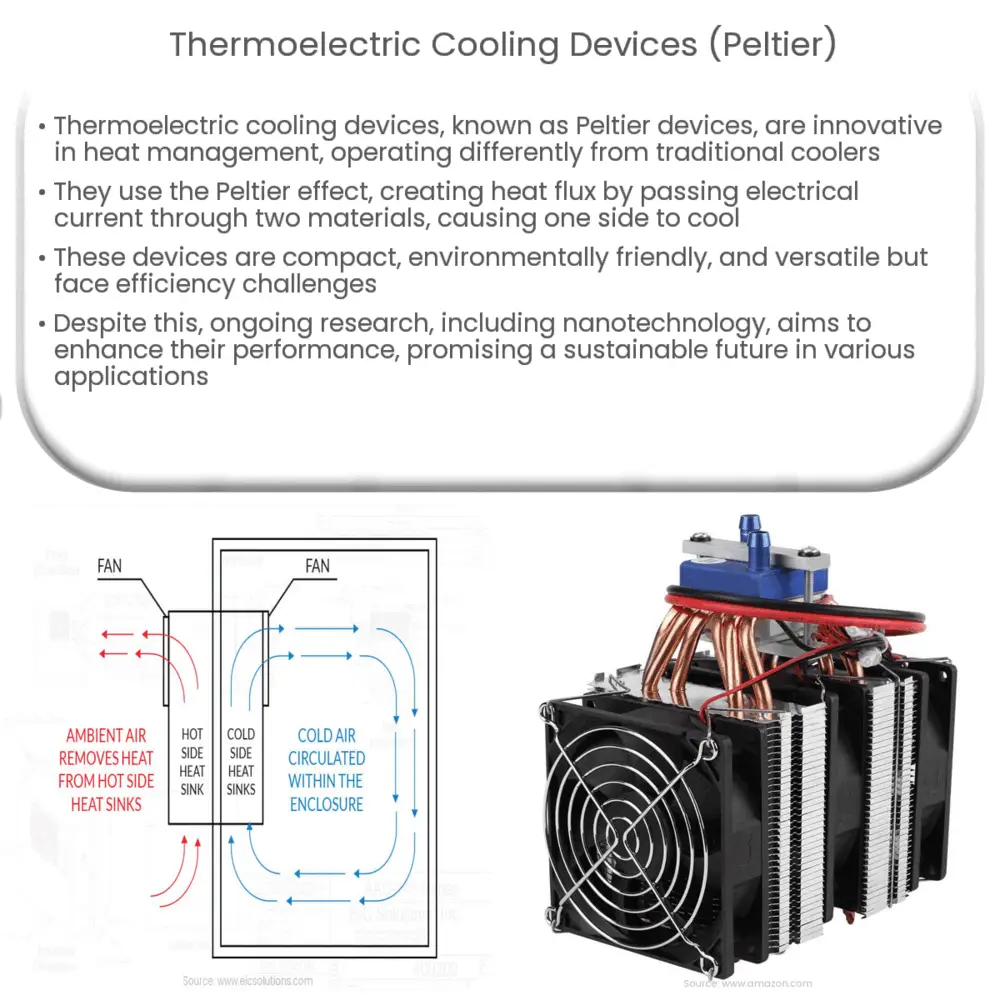Explore the fascinating world of Peltier devices, their functioning, advantages, and applications in various fields with this detailed guide.

Introduction to Thermoelectric Cooling Devices (Peltier)
Thermoelectric cooling devices, commonly referred to as Peltier devices, are a significant innovation in the field of heat management and cooling technology. Named after the French physicist Jean Charles Athanase Peltier, who discovered the Peltier effect, these devices operate on an entirely different principle than conventional cooling systems.
The Peltier Effect: Principle and Functioning
At its core, a Peltier device employs a phenomenon known as the Peltier effect. This is a thermo-electric effect that creates a heat flux between the junction of two different types of materials when an electrical current is passed through them. As a result, one side of the device becomes hot, while the opposite side cools down. It is this cool side that is often used for cooling in various applications.
Composition of a Peltier Device
- Semiconductor Material: Peltier devices typically use two types of semiconductor materials: n-type and p-type. These materials have excess electrons and deficit electrons, respectively.
- Ceramic Plates: These are on either side of the device, providing rigidity and electrical insulation. Additionally, they also help in heat distribution.
- Connecting Wires: These wires, often made of copper, interconnect the semiconductors and also connect the device to an external power supply.
Advantages and Disadvantages of Peltier Devices
When it comes to the benefits of using Peltier devices, there are several significant points to consider. They are compact and lightweight, making them ideal for use in smaller spaces. These devices do not contain any refrigerants and hence are environmentally friendly. Additionally, they can switch from heating to cooling mode by simply reversing the direction of the electrical current.
Despite these advantages, Peltier devices also have a few drawbacks. Their efficiency is relatively low compared to traditional cooling systems, and they require a significant amount of electrical power. Furthermore, they generate a lot of waste heat that must be efficiently dissipated to avoid damaging the device or the object being cooled.
Applications of Peltier Devices
Peltier devices find a wide range of applications due to their versatile cooling capabilities. Some notable examples include:
- Cooling Electronic Components: They are used to cool CPUs in computers, laser diodes, and other heat-sensitive components in electronic devices.
- Portable Coolers: Portable food and beverage coolers often use Peltier devices for their compactness and lack of refrigerant gases.
- Scientific and Medical Equipment: Temperature regulation in certain laboratory and medical equipment is facilitated by these devices.
- Automobile Industry: Peltier devices are used in automobile seat cooling systems, enhancing comfort during hot weather.
Improvements and Future Directions
Despite the disadvantages, continual advancements are being made to improve the efficiency of Peltier devices. For instance, researchers are exploring the use of new materials and designs to enhance the Peltier effect and improve heat management. Nanotechnology also shows promise in creating more efficient thermoelectric materials.
Conclusion
In conclusion, thermoelectric cooling devices, or Peltier devices, are a fascinating example of how a physical phenomenon can be harnessed for practical applications. Although they currently face issues of efficiency and heat dissipation, the versatile benefits they offer are undeniably compelling. With ongoing advancements in material science and nanotechnology, the future of Peltier devices is promising. They continue to offer a viable alternative for applications where traditional cooling methods are less desirable, contributing significantly to environmental sustainability and innovation in numerous fields.

